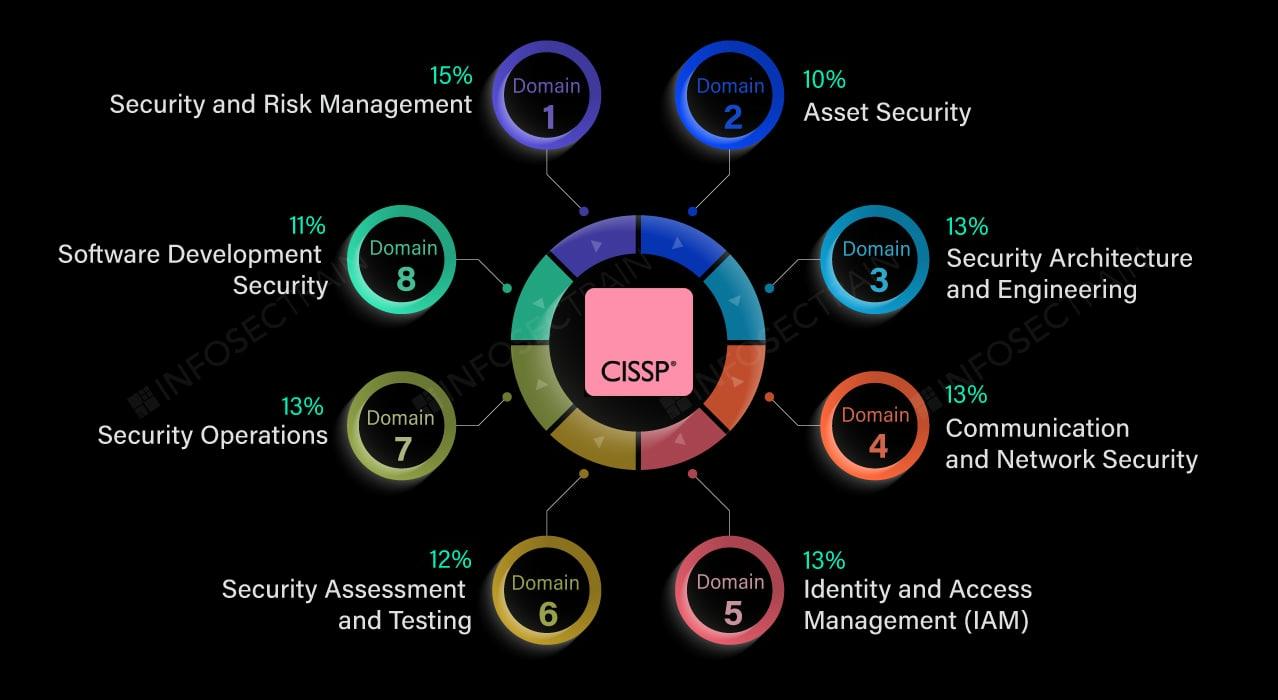
In today’s digital landscape, where cybersecurity threats continue to proliferate, organizations are increasingly prioritizing information security. The Certified Information Systems Security Professional (CISSP) certification is a globally recognized credential that validates professionals’ expertise in the field of information security. This blog post aims to provide a comprehensive understanding of CISSP, its significance in the industry, and explore the top domains covered by the certification. Moreover, we will delve into the importance of CISSP training in preparing individuals for the rigorous certification exam and equipping them with the necessary skills and knowledge to excel in their roles.
Understanding CISSP:
The CISSP certification, administered by the International Information Systems Security Certification Consortium (ISC)², is a highly respected and sought-after certification in the field of information security. It is designed to validate professionals’ competence in the domains critical to the practice of securing information assets effectively. These domains encompass security and risk management, asset security, security architecture and engineering, communication and network security, identity and access management, security assessment and testing, security operations, and software development security.
The Importance of CISSP in the Industry:
In an era marked by data breaches, cyber threats, and stringent regulatory requirements, organizations need professionals who possess the expertise to protect sensitive information and mitigate risks effectively. CISSP-certified individuals are in high demand across industries, as they demonstrate a comprehensive understanding of information security principles, best practices, and possess the ability to design and manage robust security programs. CISSP certification not only enhances career prospects but also signifies a commitment to professional development, ethical practices, and ongoing learning.
Top Domains Covered by CISSP:
- Security and Risk Management: This domain focuses on the identification and management of security risks, including risk assessment, risk mitigation strategies, security policies, compliance frameworks, and business continuity planning. Professionals in this domain play a critical role in establishing and maintaining an organization’s overall security posture.
- Asset Security: Asset security addresses the protection of valuable organizational assets, such as data, physical infrastructure, and intellectual property. It includes topics like data classification, data privacy, secure data handling, asset ownership, and secure disposal practices.
- Security Architecture and Engineering: This domain encompasses the design, implementation, and management of secure information systems and architectures. It covers areas such as security models, secure hardware and software design, cryptography, secure coding practices, and security controls.
- Communication and Network Security: Communication and network security focuses on securing network infrastructure, transmission media, and communication channels. It involves topics such as network protocols, network threats and vulnerabilities, secure network design, access control, and wireless security.
- Identity and Access Management: This domain deals with the management of user identities, authentication mechanisms, and access controls. It includes topics like identity lifecycle management, access provisioning, single sign-on, authentication methods, and identity federation.
- Security Assessment and Testing: This domain addresses the evaluation and validation of security controls and measures. It covers topics like vulnerability assessments, penetration testing, security auditing, security monitoring, and incident response.
- Security Operations: Security operations involve the day-to-day management and response to security incidents, as well as the implementation of security controls and measures. It includes topics like security monitoring, incident response planning, disaster recovery, and business continuity management.
- Software Development Security: This domain focuses on integrating security practices into the software development lifecycle. It covers secure software development methodologies, secure coding practices, security testing techniques, and software deployment and maintenance.
The Value of CISSP Training:
CISSP training plays a pivotal role in preparing professionals for the CISSP certification exam and equipping them with the necessary knowledge and skills to excel in their roles. CISSP training programs provide a structured learning experience that covers the key domains comprehensively. These programs often incorporate practical exercises, case studies, and interactive discussions to reinforce the understanding of security concepts and their application in real-world scenarios.
Conclusion:
The CISSP certification serves as a testament to professionals’ expertise in information security and is highly regarded in the industry. By mastering the top domains covered in CISSP, individuals can contribute significantly to their organizations’ information security posture and play a crucial role in safeguarding sensitive data and assets. CISSP training prepares individuals for the certification exam, ensuring they possess the knowledge, skills, and confidence to excel in their information security careers. By investing in CISSP Training, professionals are equipping themselves with the necessary tools to navigate the challenges of the digital age and secure a promising future in the ever-evolving field of information security.

More Stories
The Most Shocking Scientific Findings of the Decade
How to Think Like a Scientific Genius
The Weirdest Scientific Theories That Might Be True